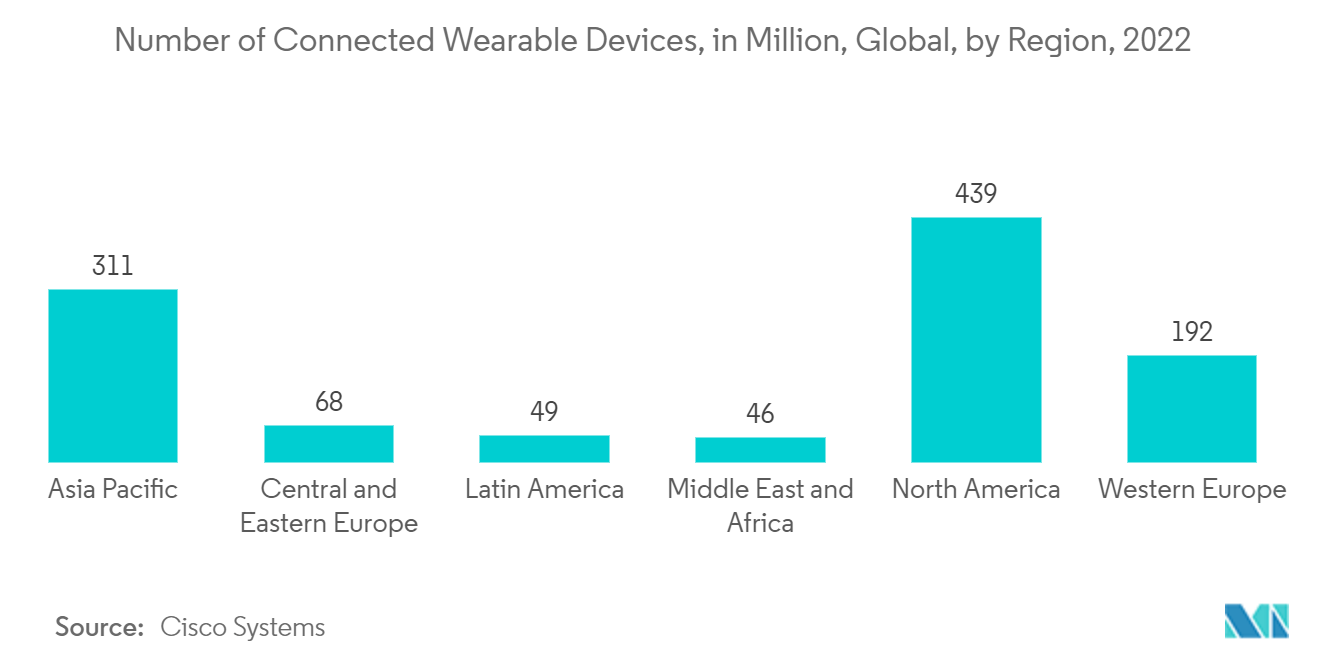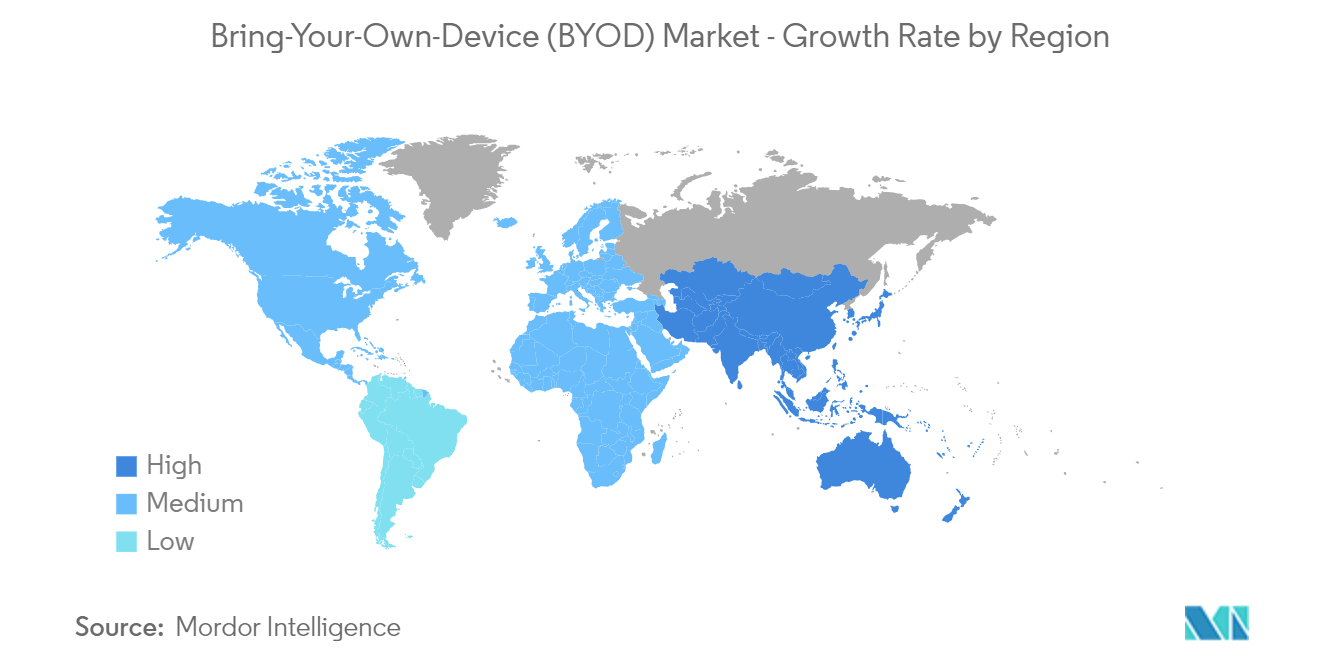Market Trends of BYOD Industry
Increasing Smart Devices Penetration is Expected to Drive the Market Growth
- The increasing smart device penetration is expected to drive the BYOD market. The growth of connected devices expands the range of devices employees can bring into the workplace. In addition to smartphones and tablets, employees may bring the Internet of Things (IoT)-enabled devices such as smartwatches, fitness trackers, and other wearable devices. This device diversity creates new opportunities for employees to use their devices for work-related tasks, further driving the BYOD market. This preference for personal devices drives the demand for BYOD policies.
- According to Cisco Systems, In 2022, North America had the most 5G connections adopted through wearable devices. In North America, the 439 million connections represented an increase of 222 million compared to the number of individuals connected to 4G networks in 2017. In North America and Asia Pacific, wearables accounted for around 70% of global wearable 5G connectivity in 2022.
- BYOD can be cost-effective for organizations as it reduces the need to purchase and maintain company-issued employee devices. Instead, employees use their own devices, reducing hardware and maintenance costs for the organization. This cost-saving aspect encourages organizations to adopt BYOD policies.
- Furthermore, the growing mobile subscriber base in emerging countries, such as China, India, and Brazil, has been propelling the adoption of BYOD policies, enhancing work efficiency and flexibility in operations. According to a Cisco report, enterprises with a BYOD policy save, on average, USD 350 per year per employee. Moreover, reactive programs can boost these savings to USD 1,300 per year per employee.
- Employees often find using their personal devices for work-related tasks more convenient. They can seamlessly transition between personal and work activities, increasing productivity. Employees also have the flexibility to work from anywhere using their preferred devices, enhancing work-life balance.
- Allowing employees to use their devices for work can increase job satisfaction. Employees appreciate the flexibility and autonomy that BYOD policies offer, which can lead to improved employee morale and retention.
- The constant advancements in smart devices, such as improved processing power, increased storage capacity, and enhanced connectivity, make them more capable of handling work-related tasks. As smart devices become more powerful and feature-rich, employees can accomplish many work functions, further driving the BYOD market.

North America is Expected to Hold Significant Market Share
- The North America BYOD market has experienced significant growth over the years. With a large population of tech-savvy individuals and a strong corporate presence, the region has quickly embraced BYOD policies.
- North America has a robust technological infrastructure, including high-speed Internet connectivity and widespread cellular coverage. These factors contribute to the seamless integration of personal devices into work environments, enabling employees to access corporate networks and applications from their own devices.
- Many organizations in North America have implemented BYOD policies to leverage the benefits of employee-owned devices. This trend is particularly prevalent in the IT, finance, healthcare, and professional services sectors. Enterprises are increasingly recognizing the potential benefits of BYOD, including enhanced productivity, reduced costs, and improved employee satisfaction.
- With the shift to virtualized and cloud-based environments, BYOD devices have enabled institutions to mobile monitor and track online logins, activities, and interactions, which helps maintain compliance and ensure that employees adhere to corporate policies. These services have also enabled institutions to streamline workforce interactions and improve performance through BYOD deployment. Additionally, BYOD devices have provided the opportunity for multiple authentications.
- The region's highly mobile workforce contributes to the growth of the BYOD market in North America. With remote work and flexible work arrangements becoming more prevalent, employees require the flexibility to use their own devices for work-related tasks. BYOD enables employees to stay connected and productive while on the move.
- Government organizations in the United States, including the defense sector, have witnessed growing adoption of the BYOD approach among their employees. In 2022, the Army expanded its BYOD policy after observing significant operational advantages during a pilot program. Led by the National Guard, the pilot program included thorough security testing. The technology implemented by the Army met functional requirements. It underwent extensive cybersecurity red teaming and testing by the Director of Operational Test and Evaluation and the Army's threat systems management office.

